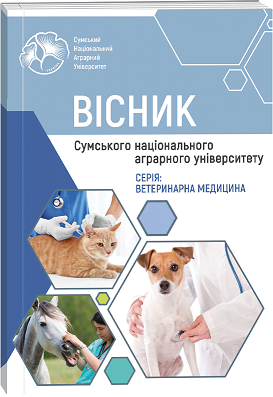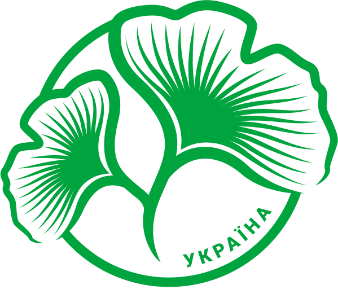MONITORING OF THE ISOLATION OF PATHOGENS OF BACTERIAL INFECTIONS OF POULTRY
Abstract
In modern commercial poultry farming, the main problem remains the fight against infectious diseases, which cause significant economic losses due to reduced productivity and costs of eradication measures. Broilers are particularly vulnerable to bacterial diseases due to their intensive growth rate and high productivity. The article is devoted to the definition and analysis of the spread of bacterial infections in poultry farms in the northeastern part of Ukraine. The main attention is paid to determining the etiological factors of infectious diseases in broiler chickens of different age groups. It was established that bacterial pathogens were isolated mainly in associations and were represented by microorganisms of the Enterobacteriacea. Most often isolated pathogens Salmonella spp., E. coli, Proteus spp. and other opportunistic microorganisms. The study carried out a microbiological analysis of 385 samples of pathological material taken from broilers of different age periods (1–7, 10–30 and 30–42 days). The results revealed a significant role of Salmonella spp. as an etiological factor of diseases in early age period, E. coli in middle age groups and Proteus spp. with Pseudomonas spp. in the older age group. Salmonella spp., E. coli and Proteus spp. were most often isolated in 89.7% of the investigated samples of biomaterial from chickens 1–7 days, the association of bacterial isolates of Salmonella spp., P. mirabilis represented the largest part – 36.9%. From samples of biomaterial from broiler chickens 10–30 days, isolates of E. coli and Salmonella spp. make up the dominant share – 41.8%, E. coli and Staphylococcus spp. – 22.1%, Salmonella spp. and C. perfringens – 14.9%, E. coli and Enterococcus spp. – 10.2%, Pseudomonas spp. and Staphylococcus spp. – 6.3%, Bacillus spp., Proteus spp. – 4.7%. Campylobacter spp., Proteus spp., Pseudomonas spp., Clostridium spp. were the largest share of isolates from the examined samples of chicken carcasses 30–42 days – 25.8%, which indicates their predominant role in the development of primary and secondary infections in poultry and the potential risks of spreading foodborne toxic infections in humans when consuming insufficiently thermally processed poultry meat. Studies confirm the influence of the microbiological background on the development of primary and secondary infections associated with the conditions of housing, feeding and biosecurity in farms.
References
2. Christensen, H., & Bachmeier J.M. (2021), New strategies to prevent and control avian pathogenic Escherichia coli (APEC). Avian Pathol., 50, 370–381.
3. Darbandi, A., Asadi, A., Mahdizade Ari, M., Ohadi, E., Talebi, M., Halaj Zadeh, M., Darb Emamie, A., Ghanavati, R., Kakanj, M. (2022). Bacteriocins: Properties d potential use as antimicrobials. J. Clin. Lab. Anal., 36, e24093.
4. European food safety authority, European center for disease prevention and control. The European Union One Health 2020 Zoonoses Report. EFSA Journal. 2021. Vol. 19, No. 12. P. e06971. DOI:https://doi.org/10.2903/j.efsa.2021.6971.
5. European food safety authority, European center for disease prevention and control. The European Union One Health 2019 Zoonoses Report. EFSA Journal. 2021. Vol. 19, No. 2. P. e06406. DOI:https://doi.org/10.2903/j.efsa.2021.6406.
6. European food safety authority, European center for disease prevention and control. The European Union One Health 2021 Zoonoses Report. EFSA journal. 2022. Vol. 20, No. 12. P. e07666. DOI:https://doi.org/10.2903/j.efsa.2022.7666.
7. Fancher C.A., Zhang L, Kiess AS, Adhikari PA, Dinh TTN, Sukumaran AT (2020). Avian pathogenic Escherichia coli and Clostridium perfringens: challenges in no antibiotics ever broiler production and potential solutions. Microorganisms, 8, 1533.
8. Gieryńska, M., Szulc-Dąbrowska, L., Struzik, J., Mielcarska, M.B., Gregorczyk-Zboroch, K.P. (2022). Integrity of the intestinal barrier: The involvement of epithelial cells and microbiota-a mutual relationship. Animals, 12, 145.
9. Golovko, A.M., & Napnenko O.O. (2024). Biological safety and biosecurity — the basis for countering new biological threats and challenges. Veterinary medicine: Inter-departmental subject scientific collection NSC "Institute of experimental and clinical veterinary medicine", 110, 5–8.
10. Gupta, Bю, Jain, A.K., Saini, M., Sardana, M., Soni, R. Angrup, A. (2022). Globicatella sanguinis corneal abscess with endophthalmitis. J. AAPOS, 26, 46–48.
11. Kathayat, D., Lokesh, D., Anjit, S., Rajashekara, G. (2021). Avian pathogenic Escherichia coli (APEC): an overview of virulence and pathogenesis factors, zoonotic potential, and control strategies. Pathogens, 10, 467.
12. Ma, K., Chen, W., Lin, X.Q., Liu, Z.Z., Wang, T., Zhang, J.B., Zhang, J.G., Zhou, C.K., Gao, Y., Du, C.T. (2023). Culturing the chicken intestinal microbiota and potential application as probiotics development. Int. J. Mol. Sci., 24, 3045.
13. Muzyka, N.M., Maiboroda, O.V., Echkenko, R.V., Rula, O.M. (2023). Bacteriological monitoring of poultry (chickens, turkeys) and compound feed for their diet in Ukraine. Veterinary medicine: Inter-departmental subject scientific collection NSC "Institute of experimental and clinical veterinary medicine", 109, 67–71.
14. One health high-level expert panel. Prevention of zoonotic spillover. 2023. 18 p.
15. Shang, Y., Kumar, S., Oakley, B., Kim, WK (2018). Chicken gut microbiota: Importance and detection technology. Front. Vet. Sci., 5, 254.
16. Shi, S., Liu, J., Dong, J., Hu, J., Liu, Y., Feng, J., Zhou, D. (2022). Research progress on the regulation mechanism of probiotics on the microecological flora of infected intestines in livestock and poultry. Lett. Appl. Microbiol., 74, 647–655.
17. Tamura, K., Stecher, G., Kumar, S. (2021). MEGA11: Molecular evolutionary genetics analysis (Version 11). Mol. Biol. Evol., 38, 3022–3027.
18. Wang, X., Zhang, P., Zhang, X. (2021). Probiotics regulate gut microbiota: An effective method to improve immunity. Molecules, 26, 6076.
19. Wu, Z., Yang, K., Zhang, A., Chang, W., Zheng, A., Chen, Z., Cai, H., Liu, G. (2021). Effects of Lactobacillus acidophilus on the growth performance, immune response, and intestinal barrier function of broiler chickens challenged with Escherichia coli O157. Poult. Sci., 100, 101323.
20. Zhang, H., Pertiwi, H., Hou, Y., Majdeddin, M., Michiels, J. (2024). Protective effects of Lactobacillus on heat stress-induced intestinal injury in finisher broilers by regulating gut microbiota and stimulating epithelial development. Sci. Total Environ., 918, 170410.

 ISSN
ISSN  ISSN
ISSN 



